Plant Onions at Home? Absolutely! Imagine stepping into your backyard and harvesting fresh, flavorful onions that you nurtured from tiny sets. Forget those bland, store-bought onions – we’re talking about homegrown goodness bursting with taste! For centuries, cultivating onions has been a cornerstone of cuisines worldwide, dating back to ancient Egypt where they were even revered as symbols of eternity.
But let’s be honest, the thought of growing your own food can sometimes feel intimidating. That’s where these simple, yet effective, DIY tricks come in. You don’t need a sprawling farm or a green thumb of legend to successfully plant onions at home. I’m here to show you how to bypass common gardening pitfalls and unlock the secrets to a bountiful onion harvest, even if you’re a complete beginner.
Why should you bother? Because fresh, homegrown onions are not only tastier, but also healthier and more sustainable. Plus, there’s a unique satisfaction in nurturing something from seed to table. So, grab your gardening gloves, and let’s dive into these easy-to-follow DIY hacks that will have you enjoying delicious, homegrown onions in no time!
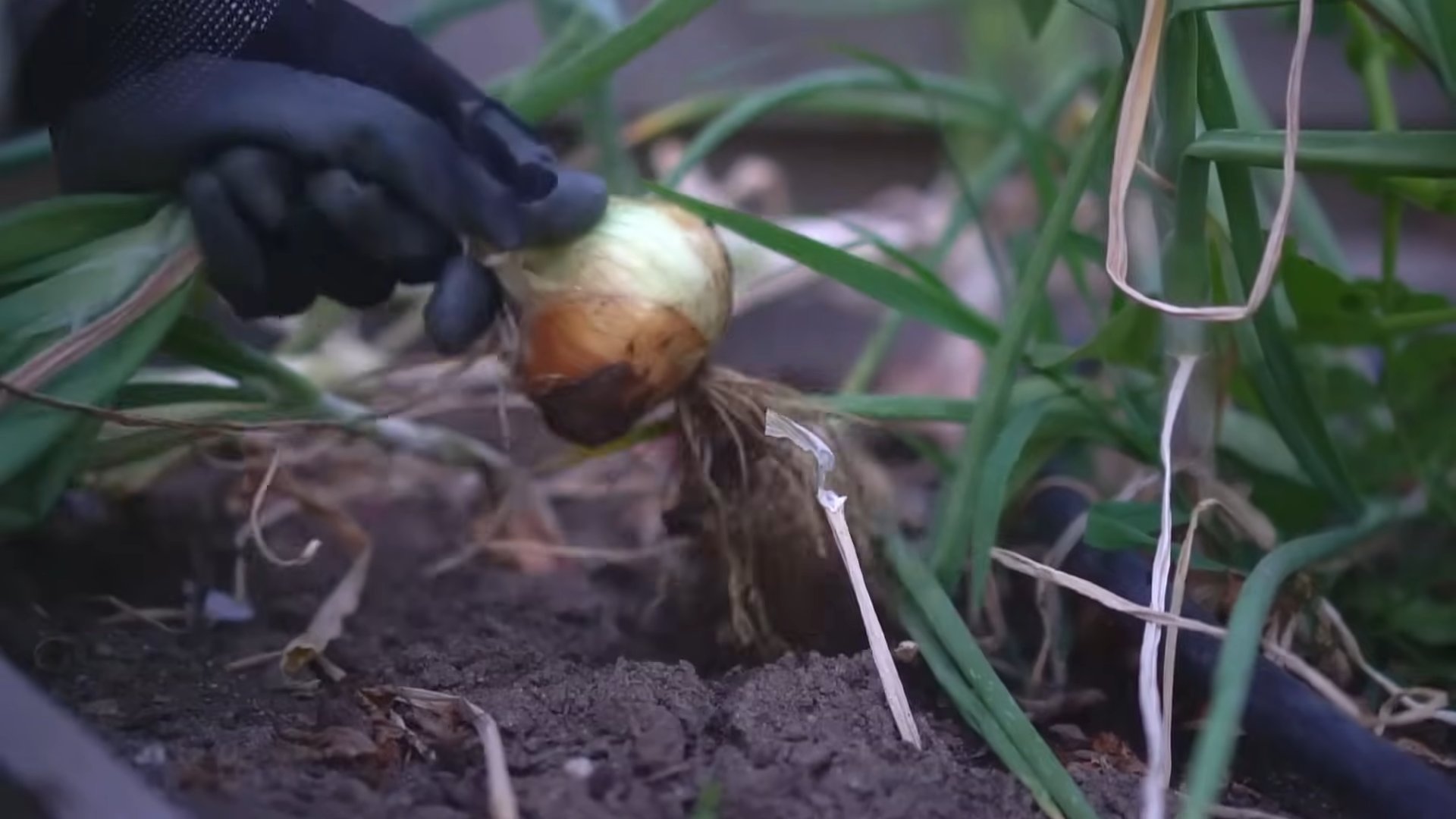
Growing Onions From Scraps: A DIY Guide to Never Buying Onions Again (Almost!)
Hey there, fellow gardening enthusiasts! Ever find yourself tossing out the root end of an onion? Well, stop right there! I’m going to show you how to turn those kitchen scraps into a never-ending supply of fresh onions. Okay, maybe not *never-ending*, but definitely a sustainable and super rewarding way to grow your own. This guide will walk you through everything you need to know, from prepping your onion scraps to harvesting your very own homegrown onions. Let’s get started!
What You’ll Need
Before we dive in, let’s gather our supplies. This is a pretty low-cost project, which is always a win!
* Onion Scraps: The bottom 1-2 inches of an onion, with the roots still attached. Yellow, white, or red onions all work! The fresher the scrap, the better your chances of success.
* Potting Soil: A well-draining potting mix is essential. You can use a general-purpose mix or a mix specifically formulated for vegetables.
* A Container: Choose a pot that’s at least 6 inches deep and wide. The bigger, the better, especially if you plan on growing multiple onion scraps in the same pot.
* Water: Tap water is fine, but rainwater or filtered water is even better.
* Sunlight: Onions need plenty of sunlight, so choose a location that gets at least 6-8 hours of direct sunlight per day. A sunny windowsill, balcony, or garden spot will work.
* Optional: Rooting hormone (can help speed up the process, but not necessary), fertilizer (for boosting growth later on).
Preparing Your Onion Scraps
This is a crucial step to give your onion scraps the best possible start.
1. Inspect Your Scraps: Make sure your onion scraps are firm and healthy-looking. Avoid using scraps that are mushy, moldy, or have a foul odor. A little bit of browning is okay, but anything excessive should be discarded.
2. Remove Excess Onion: Carefully peel away any loose or decaying layers of the onion. You want to expose the fresh, healthy layers underneath.
3. Let it Dry (Slightly): Allow the cut end of the onion scrap to dry for a few hours, or even overnight. This helps prevent rot when you plant it. I usually just leave mine on a paper towel on the kitchen counter.
4. Optional: Rooting Hormone: If you have rooting hormone, dip the cut end of the onion scrap into the powder or liquid according to the product instructions. This can encourage faster root development, but it’s not essential.
Planting Your Onion Scraps
Now for the fun part – getting those onion scraps into the soil!
1. Fill Your Container: Fill your chosen container with potting soil, leaving about an inch of space at the top. Gently pat down the soil to remove any large air pockets.
2. Make a Hole: Use your finger or a small tool to create a hole in the center of the pot, deep enough to accommodate the onion scrap. The hole should be about 1-2 inches deep.
3. Plant the Scrap: Place the onion scrap into the hole, root-side down. Make sure the roots are pointing downwards and are not bent or crushed.
4. Cover with Soil: Gently fill the hole with soil, covering the onion scrap up to its shoulder (where the green shoots will emerge). Don’t bury it too deep, as this can hinder growth.
5. Water Thoroughly: Water the soil thoroughly until it’s evenly moist. Avoid overwatering, as this can lead to rot. The soil should be damp, not soggy.
Caring for Your Growing Onions
This is where patience comes in! It takes time for the onion scraps to sprout and grow.
1. Sunlight is Key: Place your container in a location that receives at least 6-8 hours of direct sunlight per day. If you’re growing indoors, a sunny windowsill is ideal. If you don’t have enough natural light, you can supplement with a grow light.
2. Watering: Water your onion scraps regularly, keeping the soil consistently moist but not soggy. Check the soil moisture by sticking your finger into the soil. If the top inch feels dry, it’s time to water.
3. Fertilizing (Optional): Once your onion scraps have started to sprout, you can fertilize them every 2-3 weeks with a balanced liquid fertilizer. Follow the instructions on the fertilizer packaging. This will help boost growth and ensure your onions get the nutrients they need.
4. Pest Control: Keep an eye out for pests like aphids or spider mites. If you notice any pests, you can treat them with insecticidal soap or neem oil.
5. Thinning (If Necessary): If you planted multiple onion scraps in the same pot, you may need to thin them out as they grow. This will give each onion more space to develop. Simply remove the weaker-looking plants, leaving the strongest ones to thrive.
Harvesting Your Onions
The moment we’ve all been waiting for! When to harvest depends on what you’re looking for.
1. Harvesting Green Onions (Scallions): You can start harvesting green onions (scallions) as soon as the shoots are a few inches tall. Simply snip off the green shoots with scissors, leaving about an inch of the base intact. The onion will continue to grow and produce more shoots.
2. Harvesting Bulb Onions: If you want to grow full-sized bulb onions, you’ll need to be patient. It can take several months for the bulbs to mature. You’ll know they’re ready to harvest when the green tops start to turn yellow and fall over.
3. Harvesting the Bulbs: Once the tops have fallen over, gently loosen the soil around the onion bulb and pull it out of the ground. Brush off any excess soil and let the onions cure in a dry, well-ventilated place for a week or two. This will help them develop a papery outer skin and improve their storage life.
Troubleshooting
Sometimes things don’t go exactly as planned. Here are a few common issues you might encounter and how to address them:
* Onion Scrap Doesn’t Sprout: Don’t give up! Sometimes it just takes a little longer. Make sure your onion scrap is getting enough sunlight and water. If it still hasn’t sprouted after a few weeks, try planting a fresh scrap.
* Onion Scrap Rots: Overwatering is the most common cause of rot. Make sure your soil is well-draining and avoid watering too frequently. If your onion scrap starts to rot, remove it from the pot immediately to prevent the rot from spreading.
* Yellowing Leaves: Yellowing leaves can be a sign of overwatering, underwatering, or nutrient deficiency. Check the soil moisture and adjust your watering accordingly. If the soil is consistently moist, try fertilizing with a balanced fertilizer.
* Slow Growth: Slow growth can be caused by a lack of sunlight or nutrients. Make sure your onion scraps are getting enough sunlight and fertilize them regularly.
Tips for Success
Here are a few extra tips to help you get the most out of your onion-growing adventure:
* Use Fresh Scraps: The fresher the onion scrap, the better your chances of success. Try to plant your scraps as soon as possible after cutting them.
* Choose the Right Container: Make sure your container is large enough to accommodate the growing onions. A pot that’s at least 6 inches deep and wide is a good starting point.
* Don’t Overwater: Overwatering is a common mistake that can lead to rot. Water your onion scraps regularly, but avoid letting the soil become soggy.
* Provide Plenty of Sunlight: Onions need plenty of sunlight to thrive. Choose a location that gets at least 6-8 hours of direct sunlight per day.
* Be Patient: Growing onions from scraps takes time and patience. Don’t get discouraged if you don’t see results immediately. Just keep providing the right conditions and your onions will eventually grow.
* Experiment: Try growing different types of onions from scraps. You might be surprised at what you can grow!
* Successive Planting: Plant new onion scraps every few weeks to ensure a continuous supply of fresh onions.
Beyond the Basics: Growing Onions in Water
Want to try something a little different? You can also start your onion scraps in water before transplanting them to soil.
1. Find a Container: Choose a small glass or jar that’s wide enough to hold the onion scrap.
2. Add Water: Fill the container with enough water to cover the roots of the onion scrap, but not the entire bulb.
3. Place the Scrap:
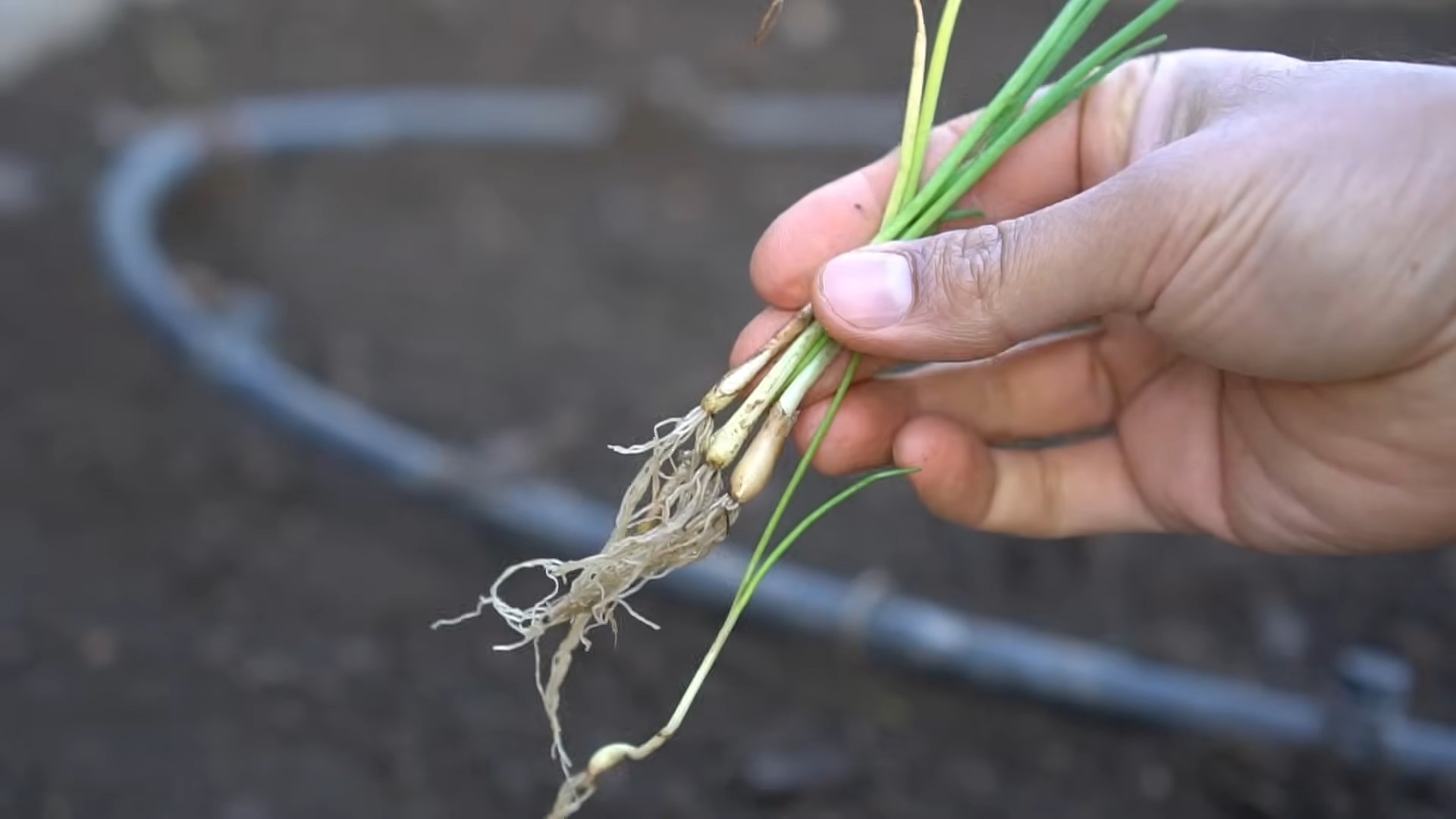
Conclusion
So, there you have it! Planting onions at home is not only surprisingly simple, but it’s also incredibly rewarding. Imagine the satisfaction of harvesting your own fresh, flavorful onions, knowing exactly where they came from and how they were grown. Forget those bland, store-bought onions that have been sitting on shelves for weeks. With this easy DIY trick, you can enjoy the vibrant taste of homegrown onions in all your favorite dishes.
Why is this a must-try? Because it puts you in control. You control the variety of onion you grow, tailoring it to your specific culinary needs. Do you prefer the sweetness of Vidalia onions? Plant them! Craving the sharp bite of red onions for your salads? Go for it! You also control the growing environment, ensuring your onions are free from harmful pesticides and chemicals. Plus, it’s a fantastic way to reduce your carbon footprint by minimizing your reliance on commercially grown produce.
But the benefits don’t stop there. Growing your own onions can be a surprisingly therapeutic activity. There’s something deeply satisfying about nurturing a plant from a tiny seed or set to a mature, bulbous onion. It’s a connection to nature that can help reduce stress and improve your overall well-being.
Looking for variations? Absolutely! Experiment with different onion varieties to discover your favorites. Try planting them in raised beds for improved drainage or in containers if you have limited space. You can even companion plant them with other vegetables like carrots or lettuce to deter pests and maximize your garden’s productivity. Consider using different types of soil amendments, like compost or aged manure, to enrich the soil and boost your onion’s growth.
Don’t be afraid to experiment! The beauty of gardening is that there’s always something new to learn.
We’re confident that once you try this DIY trick, you’ll be hooked. The taste of homegrown onions is simply unmatched. So, grab your seeds or sets, prepare your soil, and get ready to experience the joy of planting onions at home.
We encourage you to give this a try and share your experiences with us! Let us know what varieties you planted, what challenges you faced, and what successes you celebrated. Share your photos and tips in the comments below. We can’t wait to hear about your onion-growing adventures! This simple method for planting onions at home will transform your cooking and gardening experience.
Frequently Asked Questions (FAQ)
What is the best time of year to plant onions?
The best time to plant onions depends on your climate and the type of onion you’re planting. In general, onions are classified as either long-day or short-day varieties. Long-day onions need 14-16 hours of daylight to form bulbs and are best suited for northern climates. They should be planted in early spring, about 4-6 weeks before the last expected frost. Short-day onions need 10-12 hours of daylight and are ideal for southern climates. They should be planted in the fall or early winter. If you live in a climate with mild winters, you can plant intermediate-day onions, which require 12-14 hours of daylight, in the spring or fall. Check your local extension office for specific recommendations for your area.
Can I grow onions from seed, sets, or transplants? What’s the difference?
Yes, you can grow onions from seed, sets (small, immature bulbs), or transplants (young onion plants). Each method has its advantages and disadvantages.
* **Seeds:** Growing onions from seed is the most economical option, but it requires more time and effort. You’ll need to start the seeds indoors 8-10 weeks before the last expected frost.
* **Sets:** Sets are the easiest and most common way to grow onions. They’re readily available at garden centers and are relatively easy to plant. However, they can be more prone to bolting (going to seed) than onions grown from seed or transplants.
* **Transplants:** Transplants offer a good balance between cost and ease of use. They’re less likely to bolt than sets and mature faster than onions grown from seed.
What kind of soil do onions need?
Onions need well-drained, fertile soil that is rich in organic matter. The ideal soil pH is between 6.0 and 7.0. Before planting, amend the soil with compost, aged manure, or other organic matter to improve drainage and fertility. Avoid heavy clay soils, as they can retain too much moisture and lead to bulb rot. If you have clay soil, consider growing your onions in raised beds or containers.
How much sunlight do onions need?
Onions need at least 6-8 hours of direct sunlight per day to thrive. Choose a planting location that receives plenty of sunlight throughout the day. If you’re growing onions in containers, make sure to place them in a sunny spot.
How often should I water my onions?
Onions need consistent moisture, especially during bulb formation. Water deeply whenever the top inch of soil feels dry to the touch. Avoid overwatering, as this can lead to bulb rot. During hot, dry weather, you may need to water your onions more frequently.
Do I need to fertilize my onions?
Yes, onions are heavy feeders and benefit from regular fertilization. Apply a balanced fertilizer (e.g., 10-10-10) at planting time and then side-dress with nitrogen fertilizer every 2-3 weeks during the growing season. Stop fertilizing when the onion tops begin to fall over.
How do I prevent onion pests and diseases?
To prevent onion pests and diseases, practice good garden hygiene. Remove any weeds or debris from around your onion plants. Rotate your crops each year to avoid soilborne diseases. Monitor your plants regularly for signs of pests or diseases. Common onion pests include onion maggots, thrips, and aphids. Common diseases include onion rot, downy mildew, and purple blotch. Use organic pest control methods, such as insecticidal soap or neem oil, to control pests. Apply fungicides to prevent or treat diseases.
When are onions ready to harvest?
Onions are typically ready to harvest when the tops begin to fall over and turn yellow or brown. This usually happens about 100-120 days after planting. Once the tops have fallen over, stop watering the onions and allow them to dry out in the ground for a few days. Then, carefully dig up the onions and cure them in a warm, dry, well-ventilated place for 2-3 weeks.
How do I store onions?
Store cured onions in a cool, dry, dark place. A basement or garage is ideal. Avoid storing onions near potatoes, as they can cause each other to spoil more quickly. Properly stored onions can last for several months.
Can I grow onions in containers?
Yes, you can grow onions in containers. Choose a container that is at least 12 inches deep and wide. Use a well-draining potting mix and make sure the container has drainage holes. Water regularly and fertilize as needed. Container-grown onions may need to be watered more frequently than onions grown in the ground.
What are some good companion plants for onions?
Good companion plants for onions include carrots, lettuce, tomatoes, peppers, and chamomile. Carrots deter onion flies, while onions deter carrot flies. Lettuce provides shade for the onion bulbs, while tomatoes and peppers benefit from the onion’s pest-repelling properties. Chamomile attracts beneficial insects that can help control onion pests.
My onions are bolting (going to seed). What should I do?
Bolting is when an onion plant prematurely produces a flower stalk. This can happen if the plant is exposed to cold temperatures or stress. Once an onion bolts, the bulb will stop growing and become tough and bitter. If your onions bolt, harvest them immediately and use them as soon as possible. You can still eat bolted onions, but they won’t store as well as non-bolted onions. To prevent bolting, choose onion varieties that are well-suited to your climate and avoid exposing your plants to cold temperatures or stress.


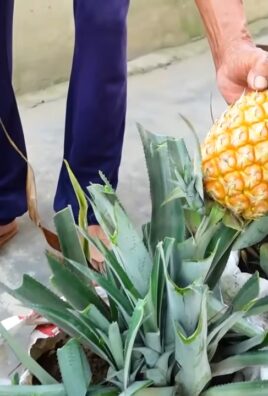
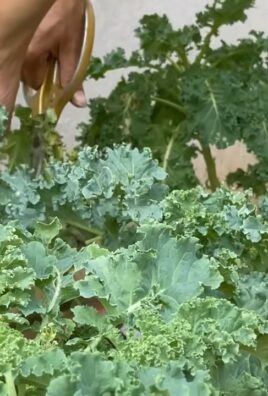
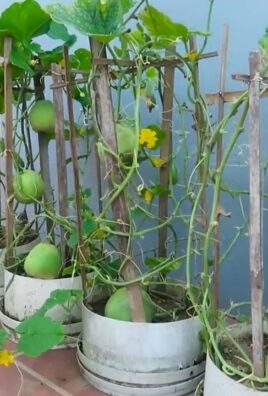
Leave a Comment